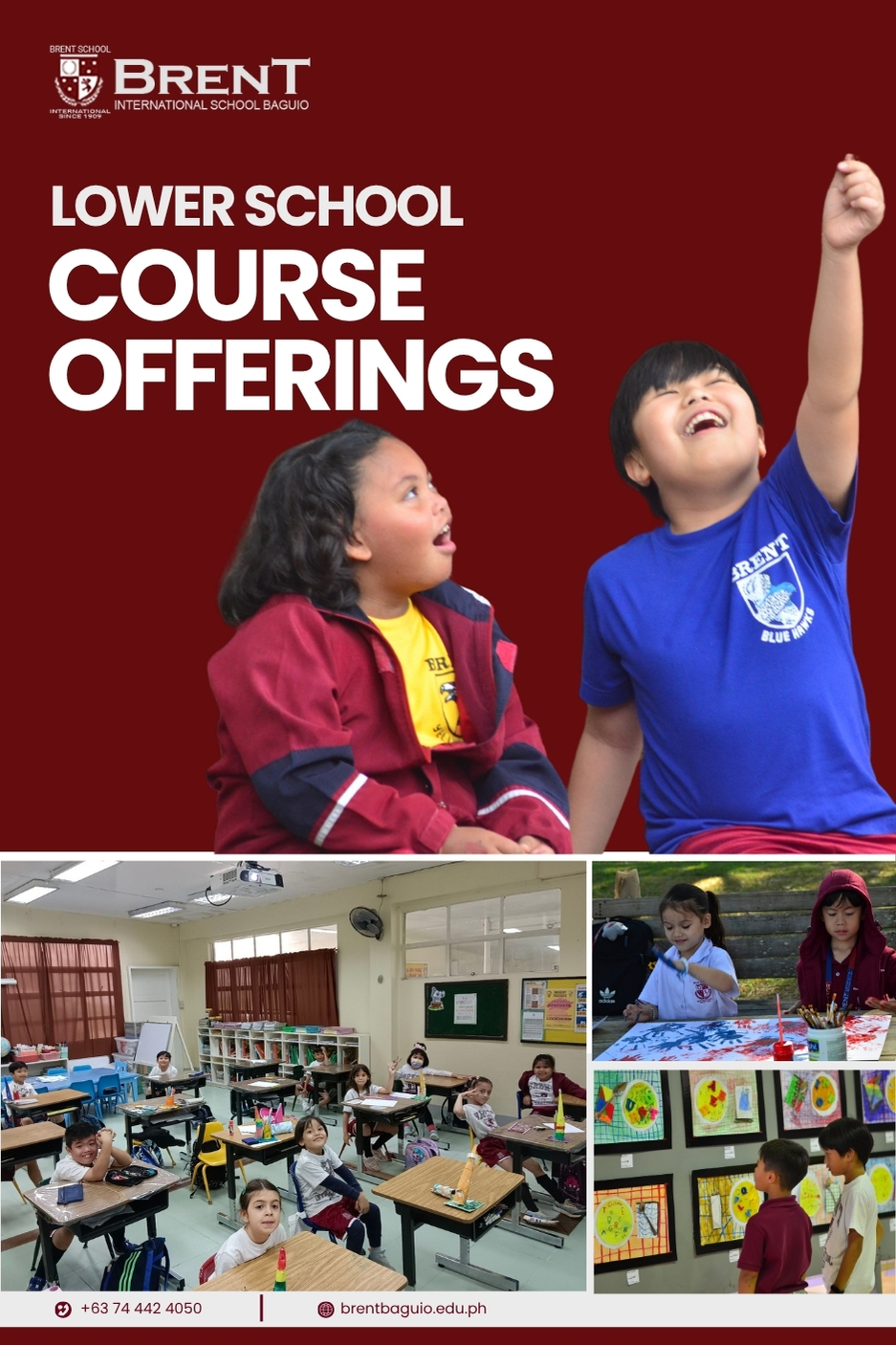
LOWER SCHOOL
Lower School includes students from Pre-Kindergarten to Grade 5. All classes are small, encouraging student-centered learning and individual growth. Each class has a Homeroom teacher responsible for the pastoral care of students, and keeping in close contact with parents. Homeroom classes meet daily, and students are taught their core subjects by the homeroom teachers. Art, Music and Computer Studies (ICT) are taught by specialist teachers.
Pre-Kindergarten and Kindergarten is a wonderful time for children to experience more what formal school is like and be introduced to broader concepts in a nurturing environment. Learning takes place as they explore various materials, interact with their peers and teachers, engage in organized activities and developmental play, and grow to be better individuals that are part of a community.
Emphasis is placed on early literacy and numeracy skills but the Kindergarten program also includes Science, Social Studies, PE, Religious Studies, Music, and Integrated Communications Technology. Kindergarten classes have four blocks, and Pre-K classes are from first block to second block.
Social and emotional learning binds all these content areas and enhances the capacity of the student to perform better in school whether academically or interpersonally.
The Language Arts program develops literacy skills of reading, listening, speaking, and writing. This is done through a range of processes, including guided activities, direct instruction, independent practice, and conferencing. Reading and spelling programs operate from Kindergarten to Grade 5,
allowing students to be assessed at a particular level, then receive individualized instruction to allow them to progress at their own pace. Students are exposed to a variety of literary forms, improving their comprehension skills and encouraging the application of the techniques of writing and grammar in context. All students learn to respond and use oral and written language effectively in a range of contexts.
The Math program in the Lower School is designed to help students see the subject as an integral, interesting part of everyday life. The program is a careful progression of concepts and skills that help students relate the concrete to the abstract. Between Kindergarten and Grade 5, the following numeracy concepts and skills are covered:
- problem-solving skills
- estimation and rounding
- basic operations
- place value
- time
- money
- measurements
- decimals and fractions
- graphing data
- geometry
- algebra
The approach to all topics is investigative and emphasizes mastering basics, applying mathematical strategies, reasoning, and communicating mathematically.
The scientific method is integrated into all units of study. Science is divided into four main categories, each of which is covered in a carefully planned cycle of learning throughout the elementary years. Life Sciences teach about living things and ecology; Physical Science covers matter and energy; Earth Science covers space, the Earth, and weather. These are explored by students through practical investigations that take place in classrooms or in the laboratory. Students also have opportunities to demonstrate their understanding and applications of the scientific method during the annual Science Fair.
The Social Studies program encourages students to be good stewards of the Earth and responsible members of society. Each unit focuses on a key question of these strands: Social Organization, Place and Environment, Time, Continuity and Change or Resources and Economic Activities. Research and inquiry are encouraged, and critical thinking skills are developed as students explore each unit in depth.
Courses in the early years aim to guide the students through Bible stories to teaching about God and creation, Jesus, as Son of God, an understanding of the Bible, and the sacraments of Baptism and Communion. The material studied becomes broader in scope and context through the grades, reflecting students’ growing understanding.
Art is a very important means of encouraging personal expression, developing fine motor skills and learning an appreciation of a key means of communication. Key techniques taught in the Lower School include: principles and elements of Art, color, line, texture shape, perspective and composition. These essential elements are taught through units of study on drawing, painting, printing and sculpture. Throughout the learning of skills great emphasis is placed on the cognitive aspects: thinking outside the box, free expression, ‘seeing rather than looking’, and creativity.
Physical Education aims to develop a positive outlook in students by raising their fitness levels, physical skills and attitudes. They learn skills across a wide range of sports and activities to enable them to participate safely and competently in a variety of modified sports, some of which form part of the regular House Activities structure. Fair play and leadership are emphasized. The P.E. program is supported by Health Studies, with students learning about cooperation, physical health, the human body, and how we care for it and ourselves.
Elementary music introduces the basic concepts of speech, rhythm, melody, harmony, texture, and time. Various instruments and styles of music are introduced. Class work includes singing, improvisation, instrumental experiences and game playing. Individual tutorials are also available in many instruments.
ICT is taught as a separate subject, but is also incorporated in all core subject areas as students transfer knowledge and skills from ICT to other classes. Students begin with mouse control and drawing progressing through word processing and graphics. Computers are available in two dedicated computer suites equipped with iMacs.
ESL students in Kinder are fully integrated in all of their classes, as we believe that at a young age, students learn best through full immersion in a new language environment. Beginning at Grade 1, student progress is checked twice a year to ensure that individual language skills are developing. Special classes are also offered to students needing special assistance in English Language Communication.
For Grades 2 – 5, specialized classes are provided in lieu of the mainstream Language Arts class. In other mainstream classes, the subject teacher provides various types of accommodations to ESL students. Beginner level students will also have extra pull out sessions to increase their conversational English confidence. There is an expectation that ESL students exit the ESL program after two to three years.

